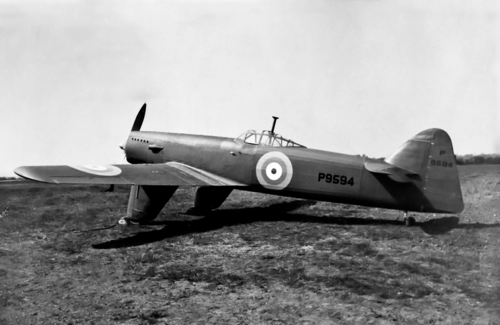The MB3 had a pneumatically operated undercarriage and wing flaps, was this superior to the hydraulically operated systems used by other aircraft?
Was is carried through into the MB5?
To avoid competing against Morane-Saulnier for the Hispano-Suiza engines, the Marcel Bloch firm chose the Gnome-Rhône Série 14 radial engines to propel its fighters between 1937 and 1942. Its first design, the Bloch M.B.150, was a loser in the
Chasseur Monoplace C.1 contest of 1934. However, the publication of
Plan V (15 March 1938) allowed the firm to obtain a contract for the manufacture of 140 units of the improved M.B.151 model, powered by a 920 hp Gnôme-Rhône 14N-35.
During the Spanish Civil War, the radial engine fighters proved that they needed a 30 per cent of extra power to fight on equal terms with the in-line engine fighters. The M.B. 151 had 180 hp less than the Messerschmitt Bf 109 E, was 105 kph slower due to the poor aerodynamic design of the engine cowling and was only armed with four 7.5 mm MAC 34A drum-feed machine guns, with 300 rounds each.
On July 1939, after some tests carried out in the
Centre d’Expériences at Rheims, the M.B.151 was considered unsuited for first-line duties.
l’Armée de l’Air and
l’Aéronavale (French naval aviation) mainly used it as advanced trainer at the
Centres d’Instruction de Chasse. It was eventually used in combat, four were destroyed and one of them rammed a Fiat C.R.42 of the
Regia Aeronautica.
They tried to correct all these deficiencies with the M.B.152, using a 1,100 hp fourteen-cylinder air-cooled Gnôme-Rhône 14N-49, with a new 85 cm diameter cowling, inspired by that of the Curtiss H.75A, driving a variable-pitch Chauvière 371 propeller. Its armament consisted of two H.S.404 cannon and two MAC 34A machine guns installed on the wings. The gunsight reflector was a Baille-Lemaire GH 38.
The new fighter was 88 kph slower than the Bf 109 E-1 in level flight and 50 kph slower in dive but surpassed the German aircraft in firepower and structural strength. Forced to prematurely entering service, the M.B.152 suffered several accidents. The engine caught fire in inverted flight due to of a bad design of the carburettor. The deficient pneumatically-actuated firing system operated the weapons with delay and did not have enough pressure to operate the cannons at an altitude above 7,000 m.
After the German-Soviet non-aggression Pact (23 August 1939) the French communists received order of delaying the weapons production through a program of strikes and coordinated sabotages. The most affected were the Farman and Renault factories that manufactured the only bomber capable of reaching Berlin and the tanks that could surpass those of the Germans. But the biggest damage was the chaos created in the manufacture and distribution of aircraft components.
When the Allies declared war on Germany (3 September 1939) out of the hundred-and-twenty-three Bloch fighters that have been built, ninety-five did not have propellers and half of them had not yet received weapons, radio equipment or gunsights. At the beginning of 1940, delays in the delivery of the Messier landing gear forced the manufacture suspension of fifty-nine M.B.152 fighters. Fearing that the machine guns would fall into the hands of communists,
l'Armée de l'Air was in charge of the installation, but the process was slow and required numerous modifications.
The M.B.152 came from factory temporarily equipped with wooden propellers, 14N-25 engines with the old cowling of 100 cm diameter and OPL R-39 gunsights. Faced with a shortage of Chauvière 371 propellers, many were sent to combat with Gnôme-Rhône 2590 propellers (with adjustable pitch in ground only) or armed only with machine guns, due to the delays in the delivery of the H.S.404 cannons.
The replacement of the waste pneumatic firing system by Deltour-Jay electro-pneumatic devices which ensured a more rapid trigger response, caused further delays at the beginning of 1940. On 10 March 1940 there still were fifty Bloch M.B.152 fighters without armament and propellers in the
Entrepôt 301 centre. When the German attack came thirty days later, hundred-and-forty M.B.151, three-hundred-and-sixty-three M.B.152, four M.B.155 and one M.B.153, with Twin Wasp engine, had been accepted by
l’Armée de l’Air, but only eighty-three of them, considered
bons de guerre (combat-ready), had been delivered to the
Groupes de Chasse. During the Battle of France, the Bloch fighters shot downed 146 German aircraft, including forty-five Bf 109 fighters. Eighty M.B.152 and four M.B.151 were destroyed for different causes.

